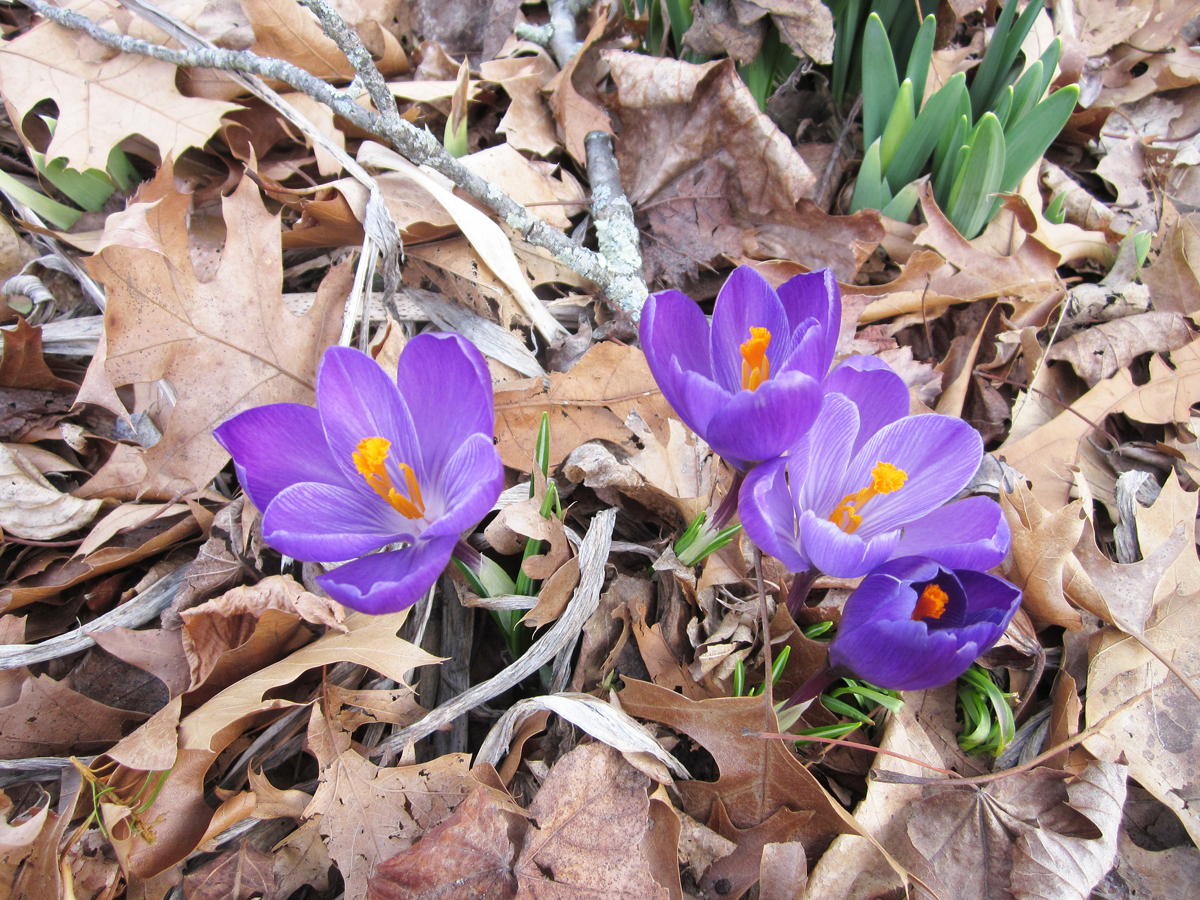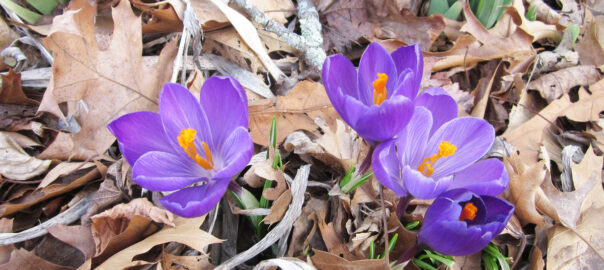
(Photo © Hilda M. Morrill)
Delightful crocus blossoms are appearing all over our gardens. Unlike other spring flowering bulbs that I’ve added through the years, not a single one is where it was originally planted. When they’re hungry, rascally squirrels, chipmunks, mice, and voles like to “dig up” the small bulbs and their offsets.
Incidentally, while crocuses are often called bulbs, they are technically “corms.” Bulbs are structurally short stems with fleshy leaves, while corms are rounded, underground storage stems consisting of a swollen stem base covered with scaly leaves and buds.
One of my favorite gardens “to visit” via the internet is Bartram’s Garden, a 50-acre public garden and National Historic Landmark in Philadelphia, PA, situated on the banks of the Schuylkill River. Founded in 1728 by the noted botanist John Bartram, it is considered the oldest botanical garden in North America.
They recently reported that they found mice digging seeds out of their seedling trays in the greenhouses. They’ve built special “cages” to cover the trays to stop the mice from entering. I’ve also heard of unrolling chicken wire over the trays.
Staff at The Arnold Arboretum in Jamaica Plain, MA, recently shared photos of their tree and shrub identification labels that were deeply “scratched.” They asked readers to guess what caused the marks.
“If you guessed squirrels, you’re correct!” they announced, adding “Squirrels depend on their teeth to open nuts and defend themselves against competitors. The teeth of rodents like squirrels never stop growing throughout their lifetime, so they demand regular maintenance and sharpening.”
They added: “Most of the labels in the landscape are made of aluminum, the consistency of which happens to be ideal for this practice of tooth sharpening. Our curation team keeps this array of former landscape labels to demonstrate this phenomenon.”
The nationally known gardening expert, TV/radio hostess, author, and columnist Melinda Myers recommends using organic Plantskydd, a safe repellent that comes in both liquid and granular forms. I’ve also read that it can be used on edible crops. The only negatives I’ve found so far are that it “smells and stains.” I look forward to doing some research and reporting back.
……. Our snowdrops are still blooming, and it was interesting to read a recent Facebook post by the noted garden writer and lecturer Tovah Martin regarding her accompanying photograph: “Take a look at my double snowdrops! They perform a little later than the single versions, but they’re sooo [sic] much fun!”
The pictures were really beautiful. I had never seen the double snowdrops before. So, it looks like I have some other researching to do since it would be so nice to have some in our gardens next year.
Happy Gardening! And Happy Earth Day on April 22!

